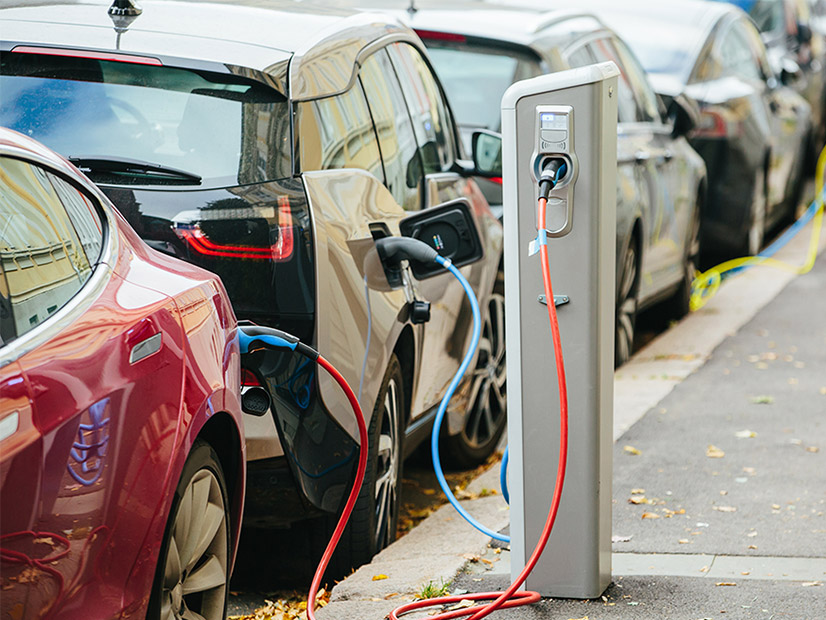The Joint Office of Energy and Transportation will take the first steps in rolling out the Infrastructure Investment and Jobs Act’s (IIJA) $7.5 billion in funding for a national electric vehicle charging network next month when it releases a guidance document to help states submit plans for the federal dollars.
Announced Thursday at the National EV Charging Summit, the guidance document “will really be the beginning of a very deep collaboration where states are developing EV development plans, but we at the federal government level, the joint office, will be working very closely to support the states, provide them with the data — the information, the know-how — in that process,” said Michael Berube, the Department of Energy’s deputy assistant secretary for sustainable transportation.
The goal will be to get the state plans submitted and approved, and then to get the first federally funded chargers installed this year, Berube said. “But our point really is, let’s get it right. Let’s make sure we have a good national plan.”
While not providing specifics, Polly Trottenberg, deputy secretary at the Department of Transportation, said the guidelines would reflect the joint office’s goals of equity, accessibility, reliability and affordability and include standards and requirements for industry partners to follow.
“The initial focus is really building out those national [charging] corridors coast to coast,” Berube said. “We’re going to make sure we’re hitting all the communities — rural spaces, urban spaces, everywhere there are interstates and major travel corridors — so that will provide a certain backbone of access and equity.”
Transportation Secretary Pete Buttigieg and Energy Secretary Jennifer Granholm launched the joint office in December to oversee the rollout of the EV charging funds from the IIJA. Trottenberg said $5 billion will go to “formula” grants to help the states implement their EV charging plans and $2.5 billion to a discretionary grant program.
The discretionary funds are intended, in part, for communities “where otherwise private investment wouldn’t go,” Berube told reporters after the announcement. The priorities include environmental justice issues and “those people that don’t have EV charging at home because those are problems and that’s really where government can come in to help solve some of those issues,” he said.
“We’re going be looking for ideas from the public sector, the states on innovative services to provide charging for people in that situation,” Berube said. “Is it DC fast-charging in their community? Is it Level 2 overnight charging? Is it street charging or at least at the multiunit dwelling facility? So, there is not a one-size-fits-all.”
Collaboration across federal, state and local agencies and the private and nonprofit sectors was itself a central theme of the half-day summit, which was organized by the National EV Charging Initiative, a coalition of regional and national groups, private companies and labor.
Working with utilities to ensure grid reliability, especially as the number of EVs and chargers increase, is also part of the joint office’s vision, Berube said.
“We have some test cases looking at smart charging management to have both EVs and the grid working together … to basically make sure that as we add EVs, which will be the largest new load on the grid, we do it in a way that can be managed as a managed load,” he said. “That is a lot of the Level 2-type charging, workplace charging, home and community-based charging. Deploying that smart charger technology at the grid side and the charger side will be one key aspect of the sector.”
The other big focus for the joint office will be highway charging facilities with fast chargers that can be upgraded continually, Berube said. With fast-charging technology hitting 150 kW and even 350 kW, the highway network “will really start to get the future EVs that are in the 300-mile range chargeable in that 15-minute window,” he said. “That’s the vision.”



